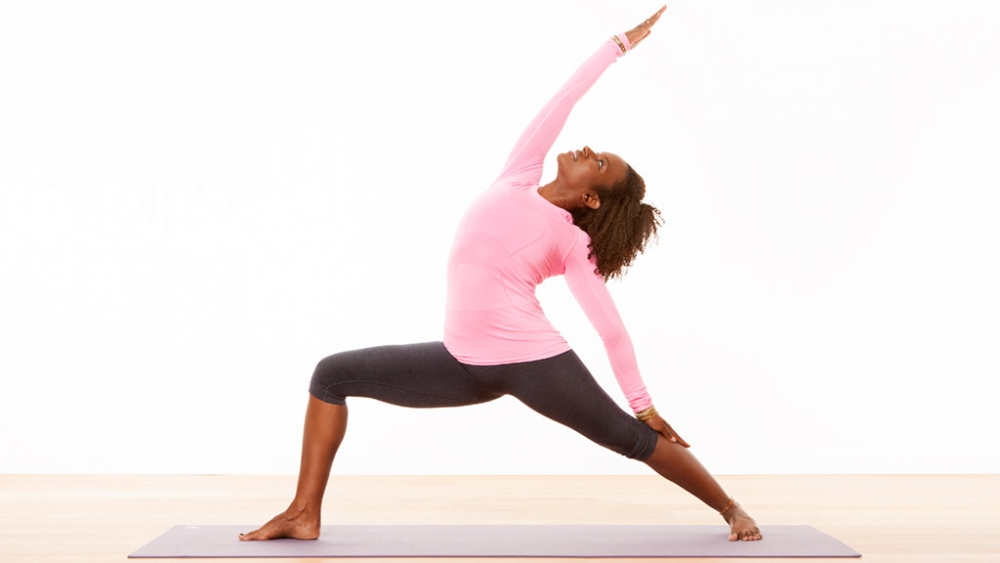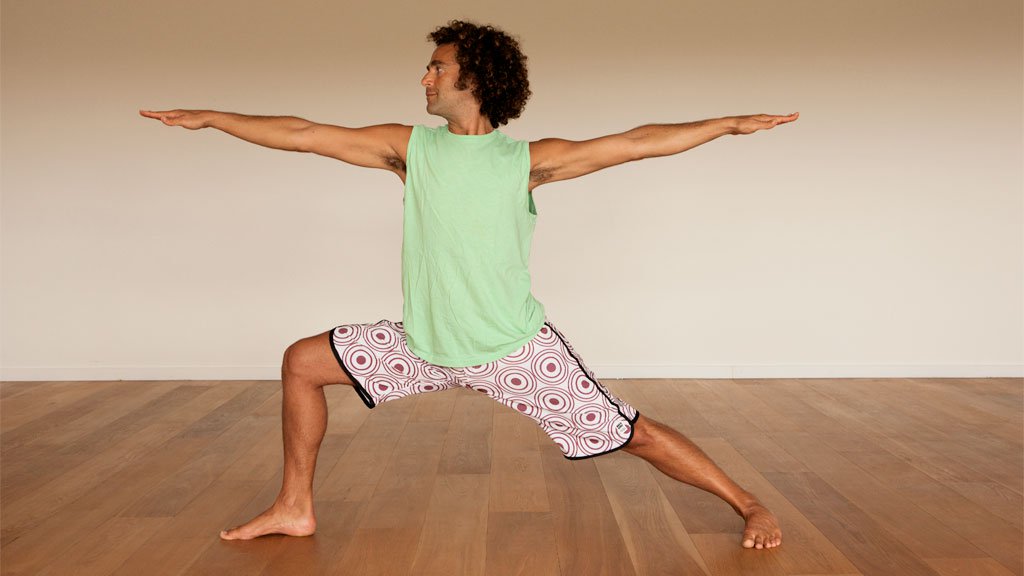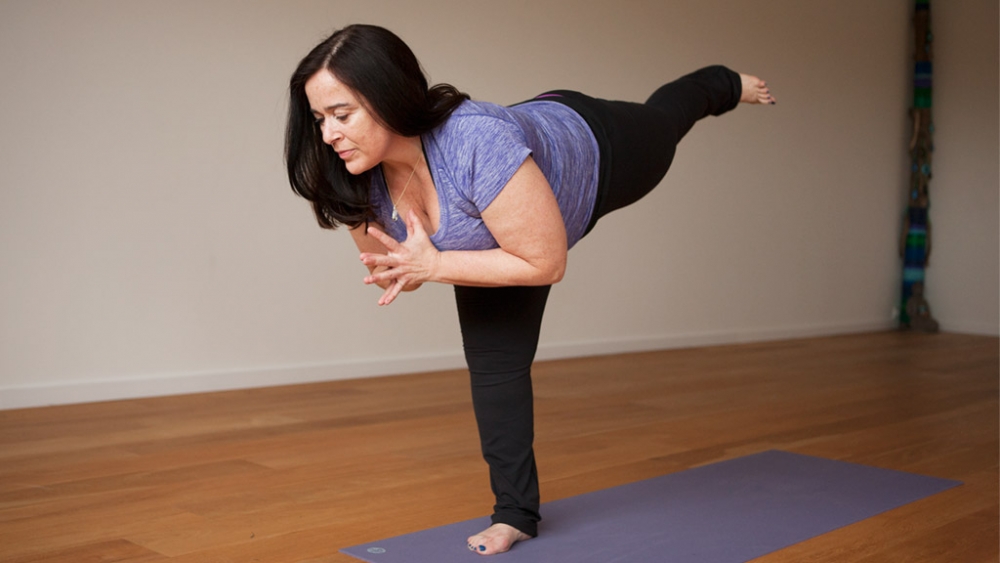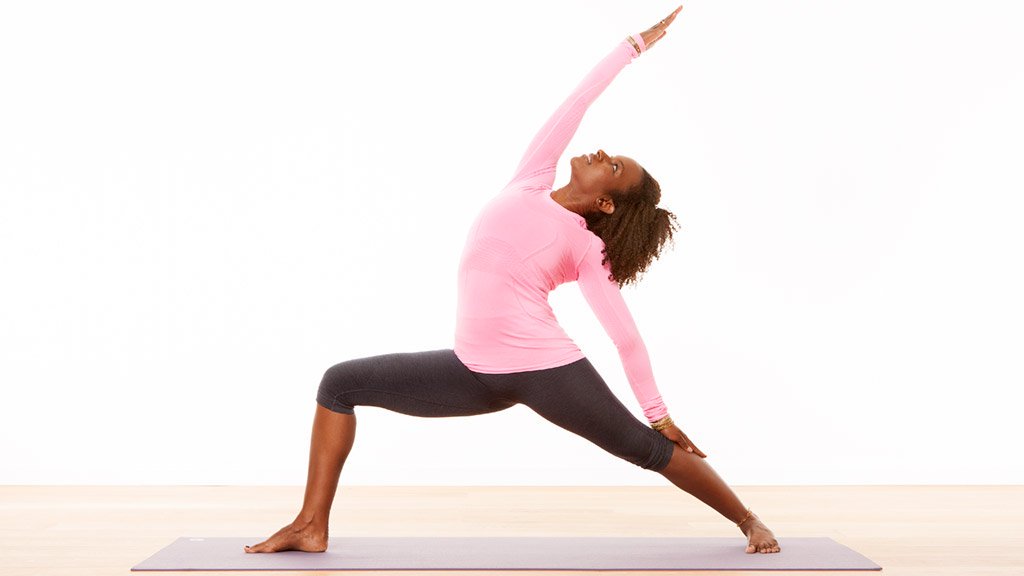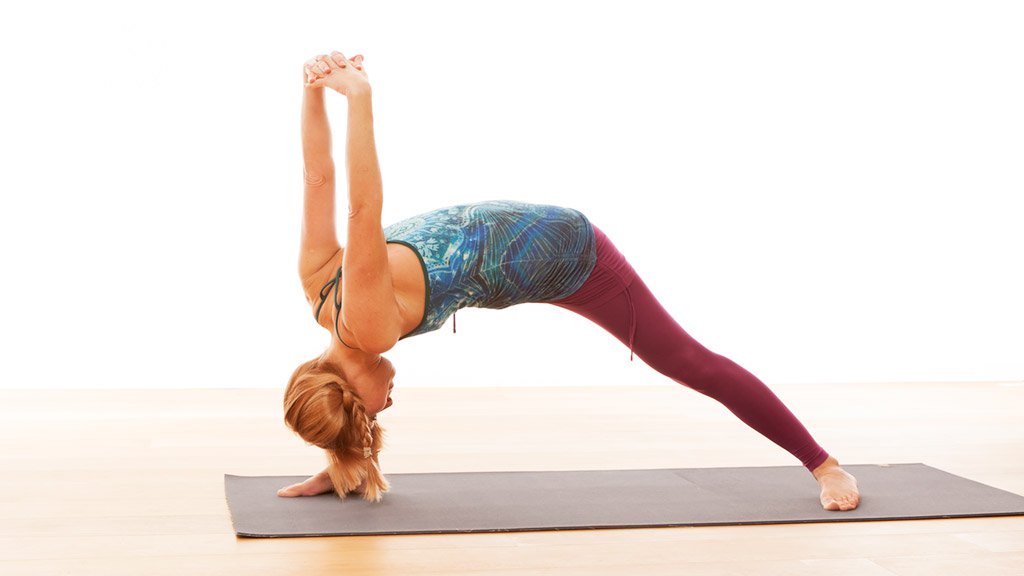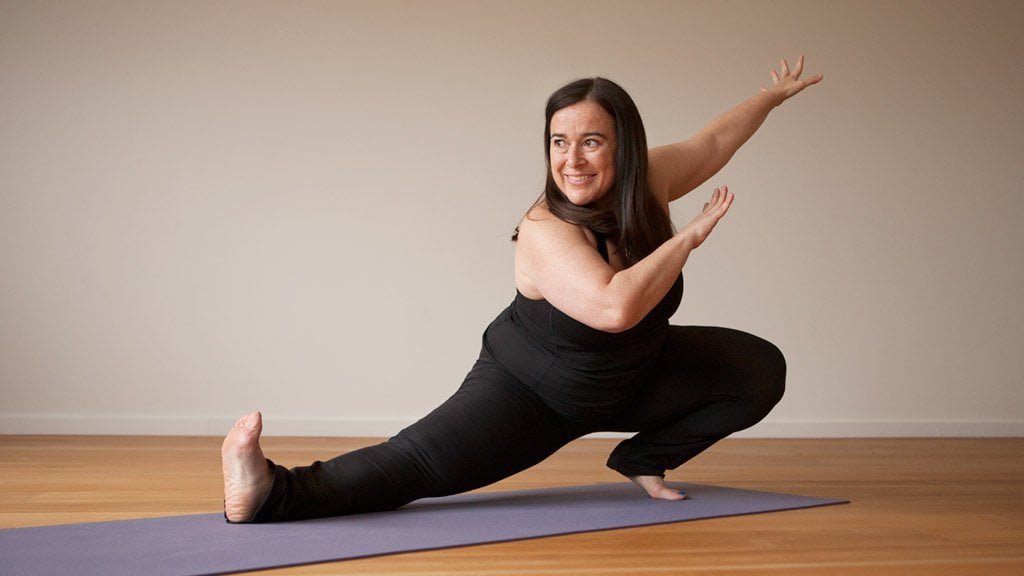Warrior I / Virabhadrasana I
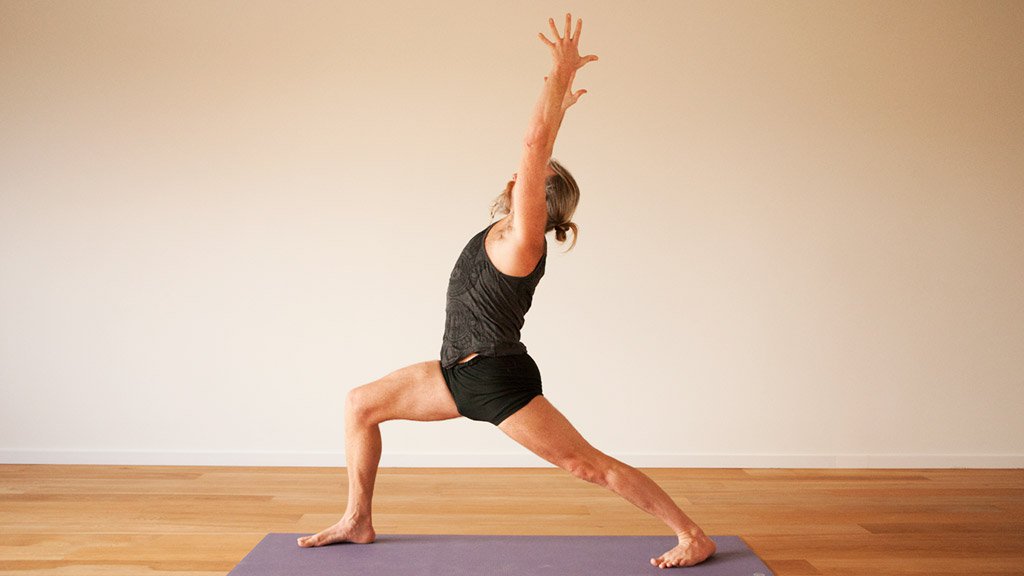
Regular practice of Warrior I/Virabhadrasana I increases flexibility in the hips and strengthens and tones the legs, ankles and feet.
Working on Warrior I will improve all standing poses as well as hip openers. In this pose we get a twist for the spine, while the opening of the shoulders and side body prepares us for backbends.
However, because of all these different elements Warrior I is a complex pose with a lot of different alignment cues to learn. Keeping all these in mind while staying with the breath can feel a bit like a juggling act. But this is Warrior Pose after all – named after the fierce warrior Virabhadra, who is said to symbolize our inner ability to overcome ego and ignorance. The warriors challenge and test us but in doing so bring us strength, focus, confidence and courage.
Length in the lower back
There can be a tendency for the pelvis to tilt forward in this pose making a stronger arch, or crunch, in the lower back. To counter this, rather than tucking the tailbone under, look to keep length in the lower back by ‘lifting the pit of the abdomen’ instead. David Lurey explains this in his article and class Yoga for Anterior Pelvic Tilt.
Warrior II / Virabhadrasana II
Warrior II requires lots of strength and stability, but also flexibility in the hips and upper body. This teaches us about one of the key principles of yoga asana practice; the balance of sthira and sukha or steadiness and ease. It also teaches us to involve the whole body in asana, and to remember that which is out of sight. In this case, keeping the back arm lifted and the outer edge of the back foot grounded.
Protecting your knees in yoga
Warrior II is a good pose to learn about your own body in terms of the alignment of your knee and ankle. For most people the safest position for the knee joint is for it to be stacked over the ankle. Sometimes however, the knee can fall in towards the big toe side of the foot. To protect the knee and ankle joint you can check to see if the knee is pointing in the same direction as the second and third toe. Take a look at Esther’s advice on Safe knees and feet in yogafor more on this.
Warrior III / Virabhadrasana III
Warrior III Pose trains our focus and works the small muscles in the feet and ankles. Keeping a slight bend in the knee can help with balance and prevent the knee from locking. Think about shooting energy out through your back foot to help lift the leg. This pose can be practised with the arms in different positions: parallel with each other in front, out to the sides, slightly pointing back or with the palms together.
Preparation for Handstands
In Warrior III the hips should be level with each other, the core engaged and the spine neutral. Practising these actions in Warrior III will help with other balancing poses like Standing Splits, Handstands and Utthita Hasta Pandangustansana. Practise this in class with Esther in Handstand 1: Neutral Spine
Reverse Warrior / Viparita Virabhadrasana
Reverse Warrior Pose opens us up to the world. It is often used as a transition between poses in a Vinyasa Flow class and as such can be overlooked as a pose in its own right. Take care of your neck in this pose. You can look to the floor behind you or to the side instead, especially if you’re holding the pose for longer.
Breathe Easy
When held for a few breaths Reverse Warrior can give an amazing opening of the side body, releasing tension in the intercostal muscles around the ribs and allowing for a freer deeper breath.
Humble Warrior / Baddha Virabhadrasana
Humble Warrior is said to teach us surrender as we bow into the pose. Unlike the other warrior poses which open us up to the world, this forward bend variation allows us to draw our focus inwards. On a physical level it is a deep hip and shoulder opener and is good preparation for Lizard Pose and Hanumanasana / Splits Pose
Squaring the hips
You begin this pose in Warrior I, as you bring your upper body forward and inside your bent knee the hips can tend to swing out to the side. Try to keep them parallel with the edges of your mat by rolling the hip of your bent leg under.
Retreating Warrior
You might not recognize this deep side lunge as a traditional Warrior Pose but you’ll find it as part of fluid Yang Yoga sequences as taught by Anat and her teachers Paul and Suzee Grilley. It is also sometimes known as Skandasana. This pose strengthens the core and increases flexibility in the hips and hamstrings.
The Yoga Warrior – a guided yoga program
Take a closer look at all the Warrior Poses in our guided online program “The Yoga Warrior”. Enjoy three weeks of active yoga classes, talks and meditation from lots of different EkhartYoga teachers, learn different variations and nuances of the poses and teaching techniques, available to all members of EkhartYoga.

